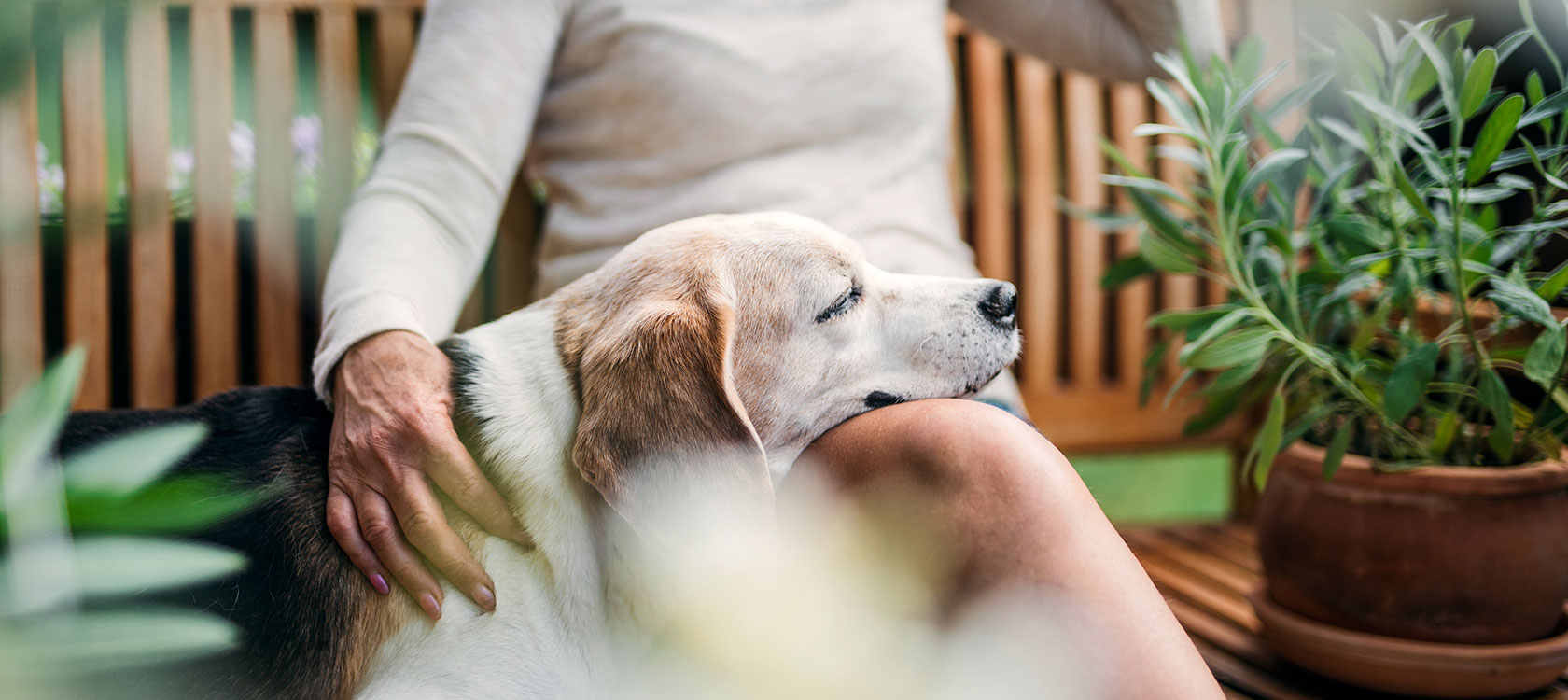
02 Aug Getting Your Pets Ready for Moving into Senior Living
Posted at 12:08h
in Blog
Own a dog? Considering a move to a senior living community? If you’re a dog owner, you may think leaving your home means leaving your pet behind. Thankfully, in today’s retirement communities, pet ownership is the norm and not the exception. When you’re looking for a retirement lifestyle that supports your independence and personal growth, it should be the right fit for you, and for four-legged family members too.
How to Make a Move More “Paw-sitive”
Moving is stressful and chaotic, not just for humans but for their pets too. When there’s unusual activity in the home and familiar items (and smells) are packed away, your dog will be picking up on what’s going on. Because you’re so busy, you may overlook how stressed your pet feels. And even though you’re moving to a pet-friendly senior living community, your dog hasn’t read the fine print! So here are some tips to make moving with a dog as stress-free as possible.
Before the Move
- Prepare for moving day by getting your dog used to being in a pet carrier for an extended period of time. No matter how far or near your new home is, when you’re transporting a dog, the safest place for it is in a pet carrier. If it’s not used to being in one for an extended period of time, familiarize it with car travel by taking short 10-minute trips and then longer rides over a period of a few weeks. Make the experience more positive by placing its favorite blanket or toy inside the carrier. Reward its good behavior with treats and affection.
- If you’ve chosen a pet-friendly senior living community like The Woodlands at Furman, consider taking your dog for a walk around the neighborhood before you move in. Stop by your new home during the walk, and allow your dog to sniff around to get used to the smells and activity. You may even meet some other dogs while you’re there — while you supervise the introduction, you’ll be able to tell if there’s potential for a future furry friendship.
- While you’re packing, don’t isolate your dog in a carrier or another room. As long as it doesn’t get distressed, allow it to see and investigate what you’re doing.
- Pet-proof your new home. If you’re moving to a senior apartment with a balcony or other outdoor space, check that railings or gates are secure. Remove any pest-control traps or pest bait in and around the home, and check that your new yard is free of any plants that may be toxic to animals.
- If you’re moving out of the area, contact your vet to get a copy of your dog’s records. It should show all recent vaccinations, prescriptions, and dosages, and have notes on your dog’s health condition. When moving with pets to a different state, note that animal health regulations can vary, so it’s important to check beforehand that your dog has had all the necessary vaccinations. And don’t forget to update your dog’s microchip so it has your new address/contact information.
Moving Day
- Put together a “doggy travel kit” with enough dog food, medications, treats, toys, and grooming supplies to last you during the moving and unpacking process. Remember to include your dog’s bed or blanket, food, and water bowls, leash, and poop bags. Don’t launder its dog bed or bedding before you move, as you’ll want it to smell familiar and comforting.
- Ensure your dog is wearing a collar with your phone number and new address on it.
- Make sure you have the number for a vet or pet emergency service near your new address programmed into your phone. You may have picked it out of the phone book, and probably won’t need it, but it’s smart to have it just in case.
- When transporting your dog to your new neighborhood, do not let it out of the crate until you are safely inside your home. It’s important not to open its crate in the car, airplane, parking lot or gas station, or anywhere else your pet can become lost or injured.
- There may be a lot of people coming and going as household items are transferred into your new home. This presents many opportunities for a stressed dog to escape and go missing. Give yourself peace of mind by having a friend or family member take your dog for a day or spend time at a pet-friendly park until the move is over. If this isn’t possible, place it in a crate, spare room, or secure space while the moving proceeds.
- Once the moving company is gone and things have quieted down, set up a room or other area where your dog will be sleeping. Place other items such as bowls and toys where they can get to them. Make sure doors, windows, and other exits are secure before you let your dog loose in the house.
Settling In
- If possible, wait until the furniture is moved in and the bulk of unpacking is done before you allow your dog to roam around.
- Your dog will want to explore every inch of its new abode. Let it make the rounds inside and walk it on a leash outside. Prevent any “accidents” by monitoring your dog’s anxiety level and observing its behavior.
- Resume your established feeding routine as soon as you can. Taking walks at the usual times and sticking to the same route for a few weeks will help your dog adjust.
- While you may have errands to run, initially try to spend more time at home. Lavish your dog with cuddles and praise to help it feel at ease. Get your dog used to being alone in a new space by gradually increasing the time you’re away.
- Even though you’re in a pet-friendly senior living community, don’t leave your dog unattended outside. It may escape in an attempt to return to its old home.
Feeling at Home
- Now is a good time to start or reestablish good habits. Reinforce the rules, boundaries, and limits you want your dog to follow in your new home.
- Be prepared for your dog to act out. Difficult behaviors can result from their feelings of displacement and uncertainty because of the move. It doesn’t mean your dog is bad or that it will act that way from now on. Consult a pet behavior expert or vet if your dog persists with its unwanted behavior and try to remain patient.
- As you and your dog explore the neighborhood together, make a point of stopping to meet other dogs and their owners in your pet-friendly senior living community.
- Ask your neighbors to recommend groomers and vets. Once you have a vet referral, schedule a “get to know you” checkup. Going in before an emergency arises will help you get to know the new vet in a relaxed setting.
A New “Leash” on Life
At The Woodlands of FUR-man, we love residents’ FUR-babies! We welcome all kinds of animal companions because we know how much pets mean to our residents. We support pet ownership in our residential contracts, offer dog-friendly outdoor recreation areas, and provide pet care as part of our nonmedical companion service, Connections. Whether you’re choosing independent living or assisted living, we encourage you to bring your pet with you. We’ll be happy to show you why The Woodland is such a “pup-ular” senior living choice!

